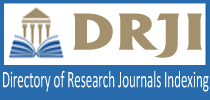Accuracy of Using Meta AI in Defining the Methods of Nahwu I'rab Based on Jurumiyah Book
Abstract
This study uses a qualitative method with a literature study to analyze the accuracy of the meaning of i'rab and its types from the Jurumiyah Book using Meta AI. This method involves collecting data from various literature and written sources to understand the accuracy and suitability of the translation by Meta AI. Data collection is carried out by observation and documentation, then with accuracy and data analysis to obtain in-depth knowledge about the use of technological advances in learning, especially Arabic language learning. Based on this study, it is concluded that although the approach is different from the Jurumiyah Book, Meta AI can provide the meaning of the rules of nahwu i'rab science flexibly, precisely and easily understood. Meta AI which is designed in a modern way provides a more descriptive picture and is accompanied by examples that are increasingly easy to understand. While the Jurumiyah Book is more formal and concise. Both sources agree on the basic principles of Arabic grammar. Thus, Meta AI can be used as one of the reference sources in learning, especially for learners who want more practical, concise and easy-to-understand information.
Keywords
Full Text:
PDFReferences
Ashimi, T. A. (2021). The concept of revealed books in Islamic worldview. Abuja Journal of Islamic Studies (AJIS), 2(2), 41–53.
Azizah, F. N., & Nashoih, A. K. (2024). Development of Functional Arabic Grammar (Nahwu) Textbooks Based on Local Wisdom for Arabic Language Students. Arabiyatuna : Jurnal Bahasa Arab, 8(2), 703–730. https://doi.org/10.29240/jba.v8i2.10252
Creswell, J. W. (2014). Research Design Qualitative, Quantitative, and Mixed Methods Approaches. SAGE Publications Inc.
Creswell, J. W., Hanson, W. E., Clark Plano, V. L., & Morales, A. (2007). Qualitative Research Designs: Selection and Implementation. The Counseling Psychologist, 35(2), 236–264. https://doi.org/10.1177/0011000006287390
Gunawan, H., Suhartini, A., Nurshobah, A., & Rifa’i, I. (2020). Penyusunan Materi Pembelajaran Qawaid Nahwiyah Dalam Kitab Al-Jurumiyah. Dialog, 41(2), 237–248. https://doi.org/10.47655/dialog.v41i2.305
Hakim, R., Ritonga, M., Khodijah, K., Zulmuqim, Z., Remiswal, R., & Jamalyar, A. R. (2022). Learning Strategies for Reading and Writing the Quran: Improving Student Competence as Preservice Teachers at the Faculty of Tarbiyah and Teacher Training. Education Research International, 2022. https://doi.org/10.1155/2022/3464265
Haleem, A., Javaid, M., Qadri, M. A., & Suman, R. (2022). Understanding the role of digital technologies in education: A review. Sustainable Operations and Computers, 3, 275–285. https://doi.org/https://doi.org/10.1016/j.susoc.2022.05.004
Harahap, L., & Zainuddin, D. (2023). Model Pembelajaran Kitab Al-Jurumiyah di Pondok Pesantren. Journal on Education, 5(3), 9990–9999. https://doi.org/10.31004/joe.v5i3.1879
Harahap, L., & Zainuddin, D. (2023). Learning Model of Kitab Al-Jurumiyah at the Islamic. Scientia, 12(1), 587–593.
Ilson, R. (2023). Dictionaries, Lexicography and Language Learning. In The Oxford Guide to Practical Lexicography. Pergamon Press. https://doi.org/10.1093/oso/9780199277704.003.0003
Maulidiya, A. R., Abdurrahman, M., & Saleh, N. (2024). Exploring AI Capabilities in Arabic Grammar : Comparative Analysis of ChatGPT and Gemini. 11(2), 160–174.
Muzdalifah, Z., Khasairi, M., & Kholisin, K. (2021). Development of the Arabic Grammar (Nahwu) Textbook Al-Ajurumiyyah Al-Qur’aniyyah based on the Scaffolding-Structure. Izdihar : Journal of Arabic Language Teaching, Linguistics, and Literature, 4(2), 153–164. https://doi.org/10.22219/jiz.v4i2.16229
Nabiilah, A., Hasanah, M., & Faisol. (2024). Implementation of the Grammatical Translation Method in I’rob Jurumiyah Learning at Madrasah Diniyah An-Nur Batu. Tanwir Arabiyyah: Arabic as Foreign Language Journal, 4(2), 167–180. https://doi.org/10.31869/aflj.v4i2.5991
Nawaz, N., Arunachalam, H., Pathi, B. K., & Gajenderan, V. (2024). The adoption of artificial intelligence in human resources management practices. International Journal of Information Management Data Insights, 4(1), 100208. https://doi.org/https://doi.org/10.1016/j.jjimei.2023.100208
Nurdianto, T., & Ritonga, M. (2021). Renewal Of Arabic Grammar (Nahw) By Al-Shatibi In Al Maqashid Al Syafiyah. Ijaz Arabi Journal of Arabic Learning, 4(2), 485–500. https://doi.org/10.18860/ijazarabi.v4i2.9861
Ritonga, M. (2019). The Influence of Greek Philosophy on The Development of Arabic Grammar. Langkawi: Journal of The Association for Arabic and English, 5(1), 13. https://doi.org/10.31332/lkw.v5i1.1135
Ritonga, M., Wahyuni, S., & Novigator, H. (2023). The future of Arabic language learning for non-Muslims as an actualization of Wasathiyah Islam in Indonesia. F1000Research, 12, 27. https://doi.org/10.12688/f1000research.125760.1
Rizki, R. B., Rizal, M. F., & Rahmawati, C. (2024). Design of Integrating Qalam AI and Language Teacher Competencies in Evaluating Arabic Reading Skill. Tanwir Arabiyyah: Arabic as Foreign Language Journal, 4(2), 257–266. https://doi.org/10.31869/aflj.v4i2.5930
Sa’dudin, I., Hafizd, J. Z., & Safitri, E. (2022). The Arabic’s Significant Role In The Understanding Of Islamic Law. Eralingua: Jurnal Pendidikan Bahasa Asing Dan Sastra, 6(2), 371. https://doi.org/10.26858/eralingua.v6i2.34716
Sutaman, Syaf, M. N., & Hadi, N. (2023). Developing The Teaching Model For Matn Al-Jurumiyah Base on The Contrastive Study to Improve Reading Skill. IJAZ ARABI: Journal of Arabic Learning, 6(1), 43–55. https://ejournal.uin-malang.ac.id/index.php/ijazarabi/article/view/15330/10122
Syarifuddin Ondeng, Andi Abdul Hamzah, & Sam, Z. (2024). Peran Al-Qur’an (Pengaruh Al-Qur’an dalam Membentuk Bahasa Arab dan Sastra). AL-QIBLAH: Jurnal Studi Islam Dan Bahasa Arab, 3(1), 84–98. https://doi.org/10.36701/qiblah.v3i1.1334
Syayfi, S., Nurhidayah, L., & Afifudin, M. (2023). The Authenticity of the Qur’an Is Based on the Interpretation of Verses about Allah’s Protection of the Qur’an. International Journal of Multidisciplinary Research and Growth Evaluation, 1, 1063–1069.
DOI: https://doi.org/10.31869/aflj.v5i1.6341
Article Metrics
Abstract view : 0 timesPDF - 0 times
Refbacks
- There are currently no refbacks.
INDEXED BY:








 This work is licensed under a Creative Commons Attribution-ShareAlike 4.0 International License.
This work is licensed under a Creative Commons Attribution-ShareAlike 4.0 International License.




